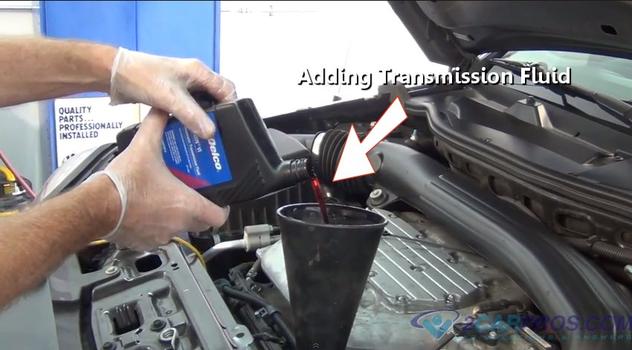How To Troubleshoot Automatic Transmission
Automatic Transmission Problems
Step by step repair guide on how to troubleshoot and repair automatic transmission problems. This repair guide pertains to most vehicles.
Difficulty Scale: 4 of 10
Tools and Supplies Needed
Step 1 - Clear all DTC's with a engine scan tool (diagnostic trouble codes.) Visit - Scan PCM
Step 2 - Start the engine and observe the MIL, if it does not illuminate continue to next step (service engine soon or check engine light.)
- Flashlight
- Protective eyewear and gloves
- Code reader
- Shop towel
Most transmission problems can be prevented by changing the fluid and filter (if applicable) according to manufacturer specifications. In extreme conditions installing an aftermarket auxiliary cooler parallel can be installed furthering the cooling effect. This prevents fluid overheating on vehicles used for towing or performance applications.
Helpful Information
Automatic transmissions make specific noises when a malfunction occurs. An automatic transmission is a hydraulic pressure driven system that can make different noises than manual transmission problems. If the transmission filter becomes plugged due to debris, it can make a whirring noise. If the fluid level is low, you might hear a bubbling sound which is caused by the pump scavenging fluid inside the transmission pan. Most internal failures are due to bearing, clutch or hard part failure. When such a failure occurs the transmission can make a grinding, whirring sound or no noise at all. When a transmission has a major failure you might hear a loud pop which could mean a drive component inside the transmission has failed.
Best Practices
Diagnostic Procedure Before Repair- Never allow little noises go unattended, a small noise can cause a transmission failure. Avoid overloading a vehicle or towing beyond capacity as this can cause premature failure.
- To prevent damage come to a complete stop before engaging park mode.
- Fault codes will be set when the transmission controller or PCM detects a malfunction. Codes are set by the computer when detecting malfunctions, such as a 2-3 shift solenoid that is not responding.
Step 3 - Drive the vehicle while trying to maintain a constant throttle position as it accelerates up through all four gears. If the transmission is shifting properly, it should be in 4th gear by the time you reach 45 to 50 mph on level ground. Repeat this procedure from a standing start 3 to 5 times. Rescan the PCM for trouble codes, if none appear the problem could have been a onetime occurrence. If a trouble code has returned repair as needed and recheck system.
- Broken gear selector cable.
- Brake lock solenoid or brake light switch has failed not allowing the gear selector to move out of "Park."
- Excessively low transmission fluid (Note: If transmission is operated for an extended amount of time with a low fluid level the transmission might fail prematurely.)
- Shorted electrical component not allowing the PCM to control the transmission. Example: shorted fuse or VSS (vehicle speed sensor.)
- Flex plate (flywheel) is broken completely not transferring engine power to the transmission.
- Transmission fluid is low.
- Transmission clutch discs or bands are worn out or burned.
- Faulty transmission shift solenoid.
- Blown fuse to the PCM controller
- Faulty vehicle speed sensor (VSS)
- Shorted second gear control solenoid
- Faulty transmission controller (PCM)
- When the vehicle is cold or going around corners the transmission fades in and out of gear: In most cases this means the transmission fluid is low. The transmission will lose hydraulic pressure causing the transmission to drift in and out of gear. Check your transmission fluid when the car is on flat ground with the engine idling in park, (Some Chrysler products must be checked in neutral.)
- Transmission is shifting too late or not at all. On most cars the transmission is controlled by the PCM (powertrain control module) if the vehicle speed sensor fails the PCM has no input so the computer will not shift the transmission properly. The best way to check this sensor is to make sure the speedometer is operating correctly, if not replace the VSS and recheck.
- The transmission skips second gear, shifts from first gear to third gear and the "service engine soon" or "service engine soon" MIL is illuminated. Scan the computer to help locate the transmission control solenoid that is malfunctioning.

Adding Transmission Fluid

Draining Transmission Fluid
Comments
Post a Comment